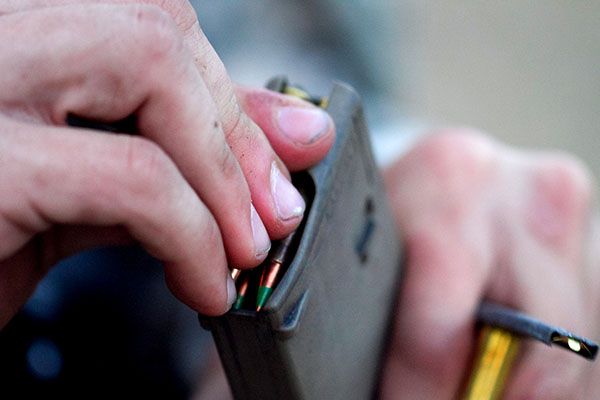
Last Updated on
Magazine capacity restrictions are a hotly debated topic today, and like it or not, you have to factor them in when you’re shopping for a variety of firearms including rifles and pistols. We take a second to examine many of the bans in place today as well as the history of the high-capacity magazine bans. Remember that these restrictions are by no means permanent. Many of these restrictions have been challenged by organizations like the NRA, and who can know for certain what will happen to some of these existing laws in the next few years.
History
The first high-capacity magazine ban was suggested in 1989 by a surprising advocate. William Ruger of the Ruger Firearm Company suggested that instead of banning all firearms (which he argued would be a Herculean effort) he suggested that any magazines holding over 15 rounds should be outlawed by Congress. His statement to Congress immediately received backlash from gun owners, especially since Ruger firearms (namely in the .22 LR caliber) have long been paired with higher capacity magazines. While no one can know for certain why exactly William Ruger spoke out, it’s likely because he was trying to defend his industry and livelihood from complete shutdown. A tragic shooting had just taken place in Stockton, CA, and concerns about assault rifles and firearms in general were everywhere in the media. Public frenzy was severe, and Congress immediately received requests to ban assault weapons and firearms of all kinds. Ruger was likely just playing damage control when he called for the ban, but we can only speculate.

Regardless, the Stockton shooting and Ruger’s call for magazine capacity limitations eventually led to the Federal Assault Weapons Ban (AWB) of 1993/1994 that was signed into law by Bill Clinton. This ban effectively rendered any magazine over 10 rounds illegal, and it also restricted the manufacture and sale of any “semi-automatic assault rifles” as they were defined. The bill excluded any semi-automatic assault rifles that were already owned and rather focused on the manufacture of new rifles.
The Bill was passed with a Sunset Provision, or a clause in the bill that after a stated period of time the law would be rendered inactive. This was set for 2004, and once the bill expired, restrictions on magazine capacities expired as well. Since then the bill has been examined for renewal several times, but it has never passed. The last vote on a renewal of the AWB occurred in 2013, and it failed at a Senate vote of 40 to 60.
State Restrictions
Although the AWB is no longer active, various states are allowed to pass their own restrictions on magazine capacity. As of the date of this article, eight states and the District Of Columbia have capacity restrictions. We will give a brief overview of these states and their regulations.
California: maximum capacity of 10 rounds
Colorado: maximum capacity of 15 (out of state residents can bring larger capacity magazines in for recreational purposes)
Connecticut: maximum capacity of 10
Hawaii: maximum capacity of 10 rounds for pistols only (members of target shooting clubs can use higher capacity magazines at designated ranges)
Maryland: maximum capacity of 20 rounds
Massachusetts: maximum capacity of 10 rounds (some firearm owners can obtain a license to have higher capacity magazines)
New Jersey: maximum capacity of 15 rounds
New York: maximum capacity of 10 rounds
District Of Columbia: maximum capacity of 10 rounds
Maine (exception): maximum capacity of 5 rounds in hunting firearms
County And Municipality Capacity Bans
In addition to state bans, there are certain US counties and cities or municipalities that also have various capacity bans:
LA County, California: maximum capacity of 10 rounds
San Francisco, California: maximum capacity of 10 rounds
Sunnyvale, California: maximum capacity of 10 rounds
Aurora, Illinois: maximum capacity of 15 rounds
Chicago, Illinois: maximum capacity of 12 rounds
Cicero, Illinois: maximum capacity of 15 rounds
Cook County, Illinois: maximum capacity of 10 rounds (Chicago laws take precedence)
Franklin Park, Illinois: maximum capacity of 16 rounds
Oak Park, Illinois: maximum capacity of 10
Note: This is not intended to be a complete list of capacity restrictions and it is subject to change at any time. It is always up to the customer or firearm owner to verify their state’s existing restrictions.




Leave a Reply